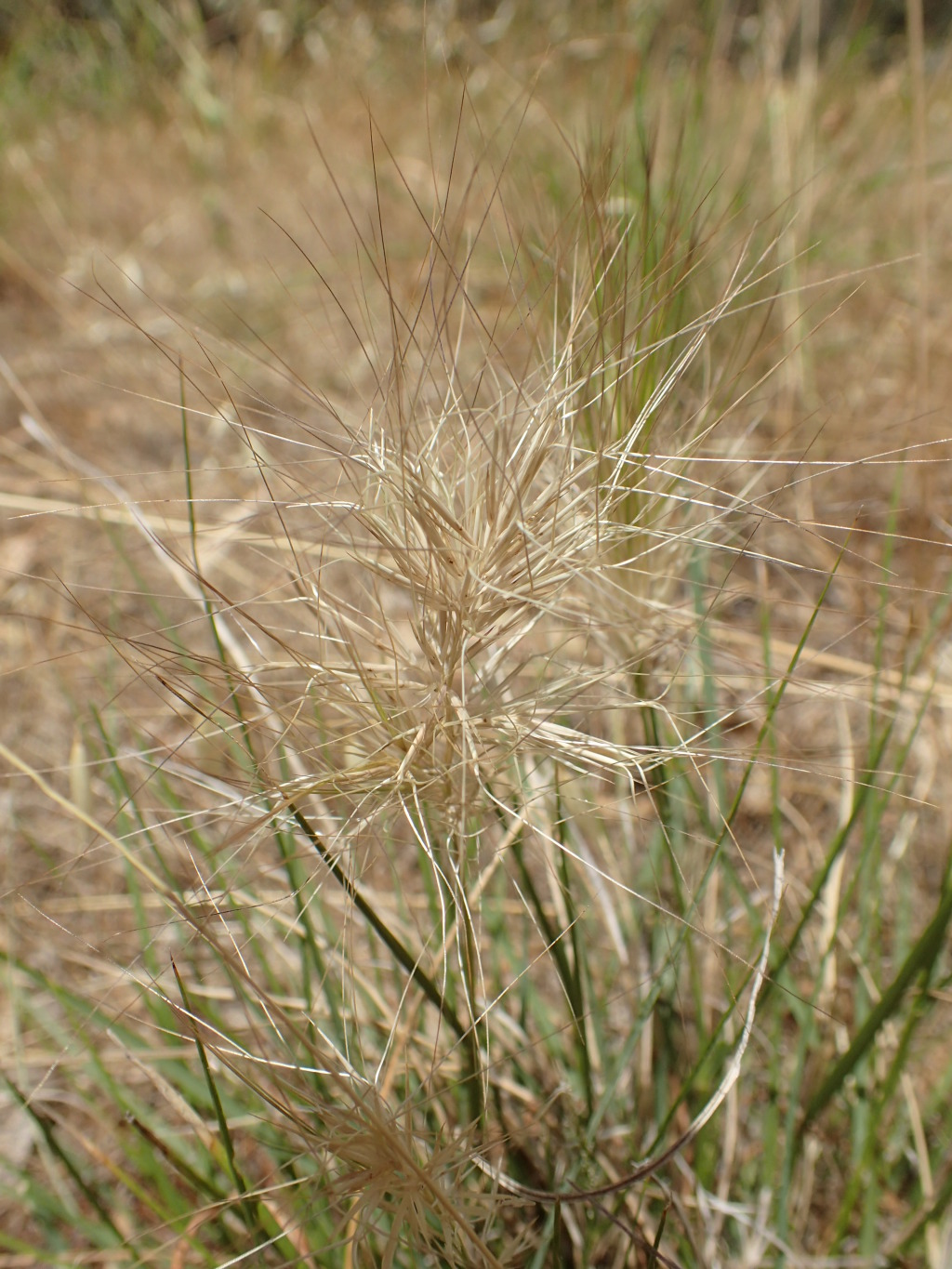Aristida behriana
F.Muell.Tufted perennial, culms erect, simple, to 40 cm high. Leaves mostly basal, smooth and glabrous; blade loosely inrolled, to 20 cm long and 3 mm wide when flattened out; ligule densely ciliate, c. 0.2 mm long with tufts of hairs to 3 mm long at the sides. Inflorescence a dense, cylindric or ovoid panicle, to 15 cm long and 12 cm wide (including awns); glumes unequal, narrow-acuminate, the lower 7–12 mm long, the upper 14–20 mm long; lemma convolute, narrow-cylindric, 7–12 mm long, glabrous except for short, white callus hairs, surface smooth, pale or purplish; awn branches subequal, 25–60 mm long. Flowers mainly Oct.–Jan.
LoM, MuM, Wim, VVP, VRiv, MuF, Gold, CVU, GGr, DunT, NIS, HNF. Also SA, Qld, NSW. An uncommon grass of drier areas, occurring on light soils but apparently not on deep mallee sands, often occurring with Rytidosperma and/or Austrostipa species in remnant patches of grassland, or as an occasional ground layer species of Eucalyptus microcarpa or E. leucoxylon woodlands.
Walsh, N.G. (1994). Poaceae. In: Walsh, N.G.; Entwisle, T.J., Flora of Victoria Vol. 2, Ferns and Allied Plants, Conifers and Monocotyledons, pp. 356–627. Inkata Press, Melbourne.
 Spinning
Spinning


